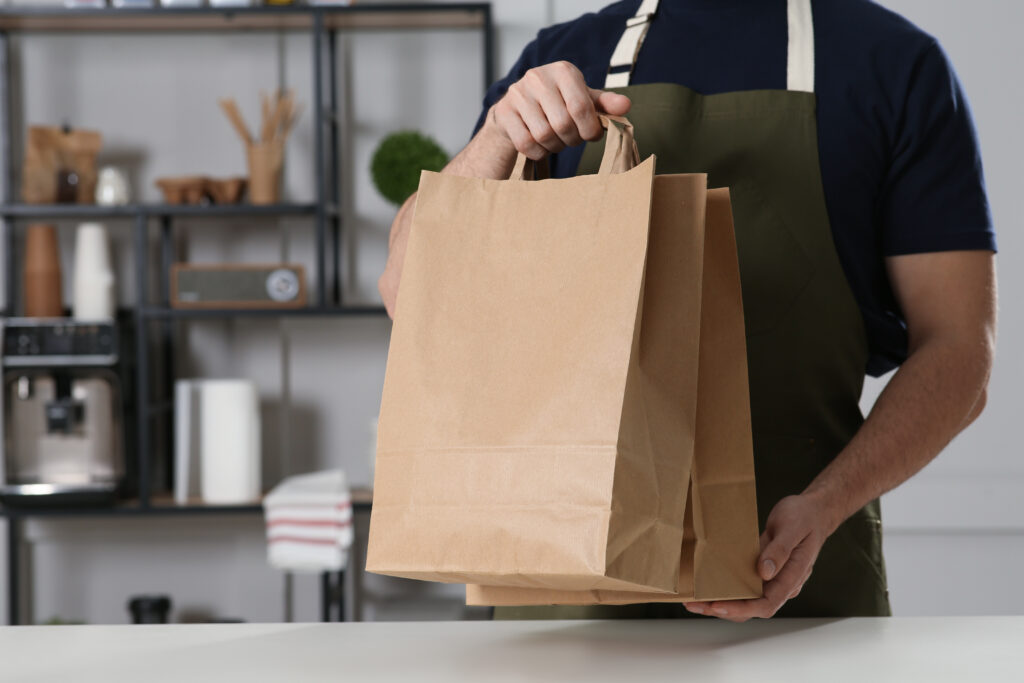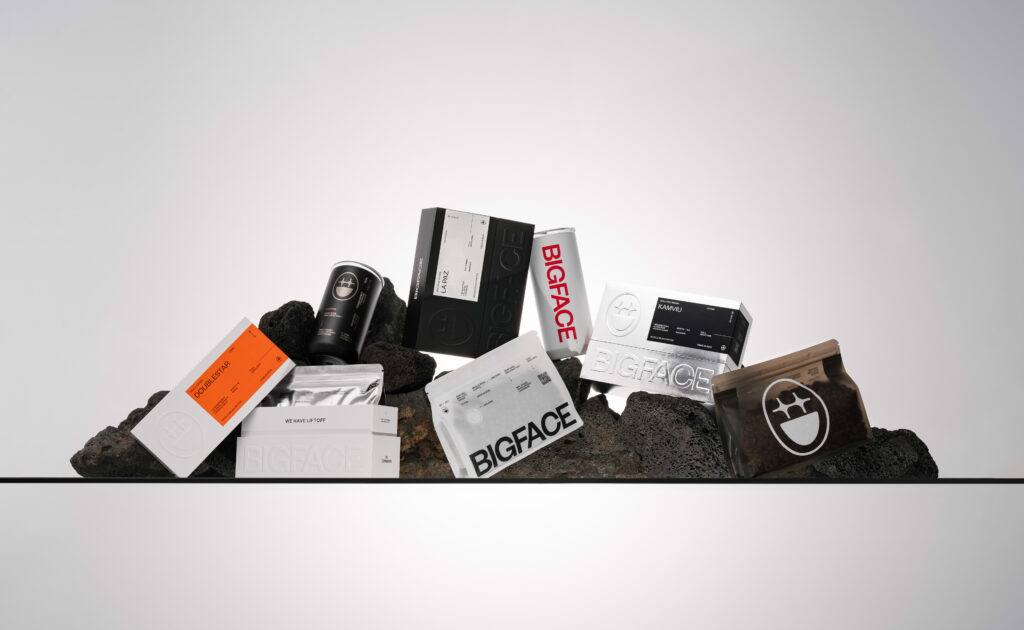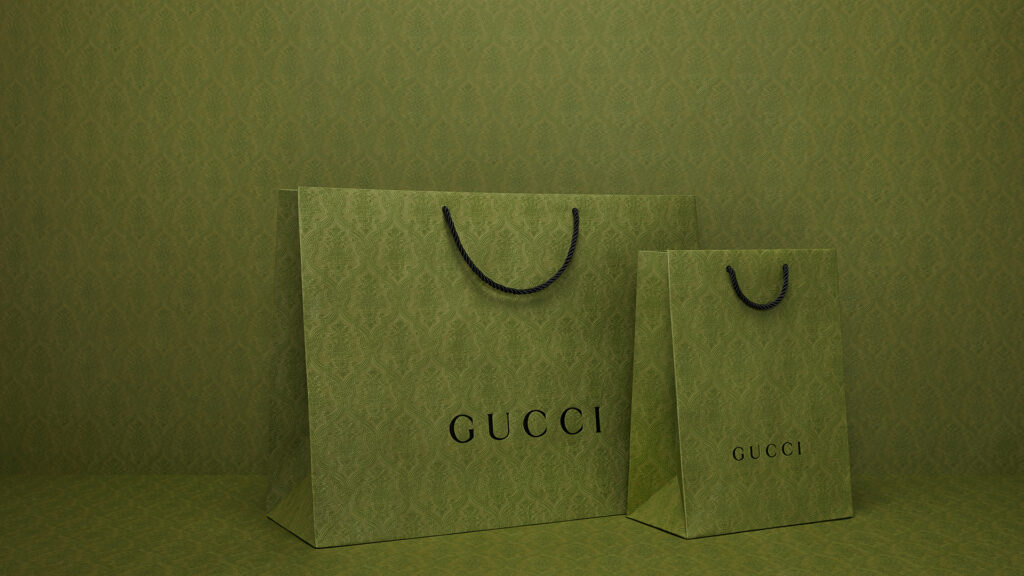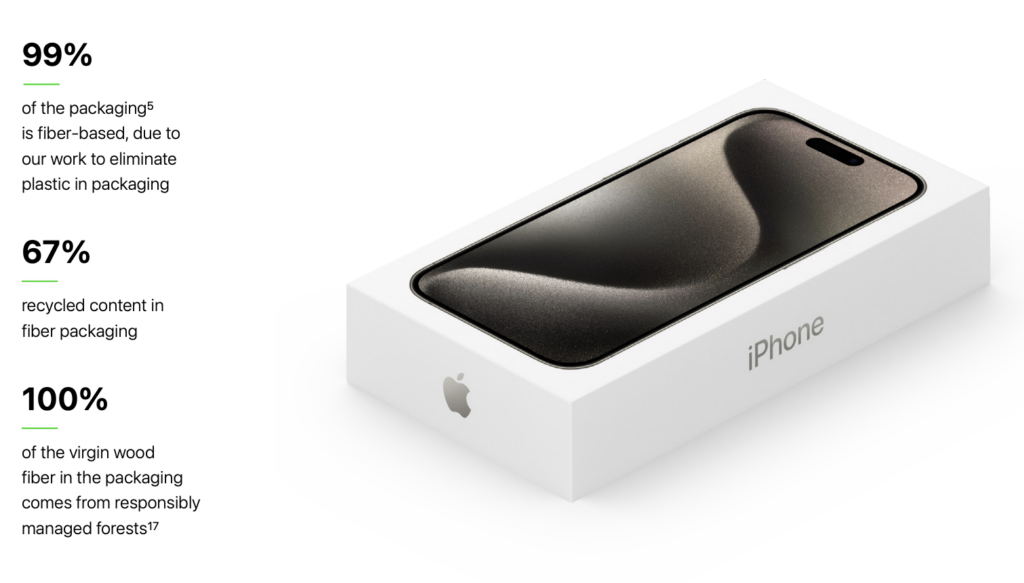Packaging is advertising, branding, protection, recognition. It drives consumer behavior. Just as the advertising industry created demand for orange juice and shiny rocks, designers also drive and change consumer behavior and wants through creative, emotional presentations.
“We’ve done it before,” Zenpack Creative Director Leo Chao said, referring to how plastic was once positioned as the material of the future by fashion and packaging designers.
And that’s why now there are courses in every college business and marketing department dedicated to consumer behavior and psychology. That’s why there are countless articles and blogs about how the color blue is calming. Or that red speaks vitality.
As Nate Jiang said in a piece on food packaging, so many items use kraft paper these days, and its association is now tied to the perception of artisanal, recyclable, and natural products.

Packaging designers are responsible for that. However…
What if packaging design was more than focusing on the—at this point, basic—psychological triggers that influence consumer behavior? What if it could be used to change perceptions to create a better place to live, with less pollution and waste? Chao says it should.
“There is a new responsibility for designers going forward,” Chao said. “And that is to communicate what is beautiful. Aside from all the business stuff—that’s already a prerequisite.”
The Prerequisite: Consumer Behavior and Packaging Basics
The basics of packaging’s effect on consumer behavior are relatively straightforward these days. Things change, new insights gleaned, but humans are still humans, which is why Aristotle still holds weight—we haven’t changed that much.
The list is as follows, and using these in your packaging can make or break your brand—usually, unless the product and word-of-mouth is top notch.
- Color
- Typography
- Graphics
- Materials and finishes
- Shape and size

All of these communicate something about your packaging, your product, and your brand. They drive consumers to do something—and usually that means buying your product.
So what does this look like in action? In a discussion about pharmaceutical packaging, Zenpack Lead Visual Designer Jin Wang said that you wouldn’t use high contrast colors for any products in the industry—the look would be off, and trust would be lost. Neon green? Not in pharma.
As for the typography, she says clarity is the top goal. If customers can’t read exactly what they’re buying, and how to use it—all while crammed into a small space—then they probably won’t buy it.
(This is likely a good thing since we don’t exactly want people buying Nyquil if they plan on driving to work on it.)

By using these aspects of packaging, designers can:
- Get attention
- Motivate people to buy
- Convey product quality
- Create an emotional response (which often also gets people to buy)
- Make a good first impression
- Provide a unique or pleasurable unboxing experience
- Show brand quality, values, etc—branding
- Creates brand recognition
This is what packaging designers do—they help express your brand, protect your product, and get people to buy.
But what good does any of that do if the person who creates your packaging indiscriminately uses plastic? These considerations matter, because in today’s age of consumers, a McKinsey study showed 78% of consumers say sustainability is important to them when making purchasing decisions. People are shunning plastic wherever possible. They also claim that businesses that don’t adapt will feel the pinch.
The New Responsibility in Driving Consumer Behavior
While businesses and brands should understand the new material landscape and how things are changing rapidly, no one is expected to know everything. Nor should they be.
But since designers work in that middle space between material developers and brands wanting to say they’re doing their part, it is designers who also hold the keys to all this.
“The new responsibility that I’m referring to is, take seaweed paper for example,” Chao said. “Say we now have robust proof that seaweed paper is good, [functional, sustainable], and can replace a lot of plastic. But it has a certain look, that for whatever reason may not be suitable for many clients. How do we, as designers, work with that look and make that material useful for as many of our clients as possible?”
Biomaterials, still in their relative infancy as companies and brands have focused on the cheapness and functionality of plastic, don’t always have the refined look of 70 years of plastic development. And while brands have developed traits that define them over the years, they are often hesitant to use a new material that may not look right. This is Chao’s throughline.
“One more example,” he said, “because we’re living it right now. Molded pulp. Like paper pulp, it’s likely a lot better than plastic—Americans are past that now. But it has a certain look. Not all industries like that look. If you have a Gucci bag, per se, you want those to come in beautiful, textured art paper that’s printed with foil and all that, right? Good look. Yeah, nothing wrong about that.

“But if I put it in a paper pulp box or tray or whatever and give it to you, it probably won’t feel right to you. I believe it is the designer’s responsibility to make that pulp work for Gucci. I haven’t seen that done yet. I think it can be done. If Gucci hired me, I’m going to try my best to convince [them to do that]. That’s behavioral change. If we can look at Kanye West’s T-shirt and think it’s cool, we’ve been influenced and changed our behavior. Because 10 years ago, that looks like someone’s crazy, right?”
And while cycles come and go, Gucci and West are perfect examples of creating behavioral change.
Yet, Chao emphasizes that he and other sustainability-focused designers are not trying to fool anyone or create ridiculous trends. “We’re trying to explore a new material or whatever this new look is, and turn it into a beautiful object that you can use everywhere. I think designers all have the potential to do something like that, to understand what is better, and to transform that material. Knowing that’s better for the client in terms of being more sustainable—it’s gonna have less waste, less chemicals and toxicity and all that stuff. Express all that through a beautiful way.
“And if Gucci or any other luxury brand can buy it, anyone below that line can buy it too, because that’s how it happens. One day, Sephora will be full of pulp and plastic free and it won’t be a matter of cost anymore, but competitiveness.”
And then there’s Apple, which has been using molded pulp for its box inserts for the last few years. “I still have people ask me today to just make an iPhone box. It’s not better. They just like Apple products. Yeah, the packaging is beautiful, but they just feel that’s the premium one, the goal, the standard.”
Chao said that rather than simply sticking with plastic, Apple invested in manufacturers who could make pulp work for their brand. They saw a gap, and they tried to bridge it. This gap extends not just to material development, but all aspects of packaging, including colors, textures, and forms.

Making a new material work for a brand is the designer’s edge. Molded pulp may eventually be replaced, as more focus is put on deforestation. Or molded pulp may remain, as pulp from non-tree sources becomes more prevalent. But whatever becomes the material, designers will need to adapt.
“When a more sustainable solution arises,” Chao said, “it might not fit every industry, or work well with every brand, but we should be able to change that dialogue and say ‘No, that’s actually beautiful. And I’m going to show you why that’s beautiful.’
“When you can do that, you change behavior. And when you change enough behavior, you drive business to change. And once these big leader brands start to change, you see all the smaller brands change.
“I found more joy in doing the work I do now. There’s actually some purpose aside from all the good stuff I get, rewards, feelings I get from doing design work. It’s a good mission.”
Packaging Just One Of Many
What it all comes down to is communication—in the form of packaging, as the job of the designer, and as to what the idea of beauty is. This isn’t just inherent in packaging, but in all forms of design—as Chao talked about fashion and apparel above, and as he discussed the furniture industry next.
“They’re talking about the same kind of ideas. What’s considered premium and high-end will change—if the new designers start to formalize a new language around these things. And people will look at [the new creations and materials] and say, ‘Okay, well I guess this is the shit right now.’ And that’s behavioral change. There’s multiple industries that are thinking about this same thing.”
Do You Have Questions? So Do We. Let’s Chat
So do designers in all these industries have a chance to do this? Not just to get people’s attention or get them to buy something, but to change the last 60 years or so of entrenched, disposable behavior?
“Yeah, so I’m hopeful for this profession,” Chao said. “Among all the AI tools and all that, I think there’s still a place for designers to think about these things. And at this point, it still might be a little complex for AI, because even human beings don’t fully understand the question yet.”
If you have hope or want to figure out the question or just want someone who thinks about all this stuff to handle your packaging, reach out to Zenpack. It’d be great to chat.
If you want to know more about Zenpack’s services
Let our packaging consultants help you turn your idea into reality.


